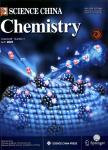版权所有:内蒙古大学图书馆 技术提供:维普资讯• 智图
内蒙古自治区呼和浩特市赛罕区大学西街235号 邮编: 010021

作者机构:State Key Laboratory of Analytical Chemistry for Life Science School of Chemistry and Chemical Engineering Nanjing University Hangzhou Yanqu Information Technology Co. Ltd.
出 版 物:《Science China Chemistry》 (中国科学:化学(英文版))
年 卷 期:2025年
核心收录:
学科分类:0710[理学-生物学] 071010[理学-生物化学与分子生物学] 081704[工学-应用化学] 07[理学] 08[工学] 0817[工学-化学工程与技术] 070302[理学-分析化学] 0703[理学-化学]
基 金:supported by the National Natural Science Foundation of China (21827812 21890741)
摘 要:Low quantum yield and insufficient exciton utilization of nanoemitters are great obstacles to achieving their practical electrochemiluminescence(ECL) applications. Here an aggregation strategy of thermally activated delayed fluorescence molecules was designed to reduce the energy gap between the lowest excited singlet and triplet states, and accelerate the reverse intersystem crossing of triplet excitons to the excited singlet state, which increased the exciton utilization, leading to longer delayed fluorescence lifetime and greatly boosted the quantum yield up to 87.5%, using a previously reported DMAC-TRZ as a *** aggregation could be conveniently performed by increasing the water content in the tetrahydrofuran solution of DMACTRZ. Benefiting from the high quantum yield, the solid ECL efficiency was broken through to 62.9%, much higher than the limit of 25%, and a sensitive ECL imaging method was thus proposed for simultaneous high-throughput detection of mucin1-specific sialic acid and fucose on cells by combining a ***-aided cleavage recycling to obtain the detection samples, and a DNA array to capture the detection samples and then recognize the ECL probes. This method showed good reliability and could be expanded to detect the glycans on different proteins by altering the protein aptamer sequence. This work charts a fresh course for exploiting highly efficient ECL emitters and extends their applications in ECL bioanalysis.